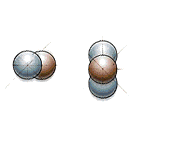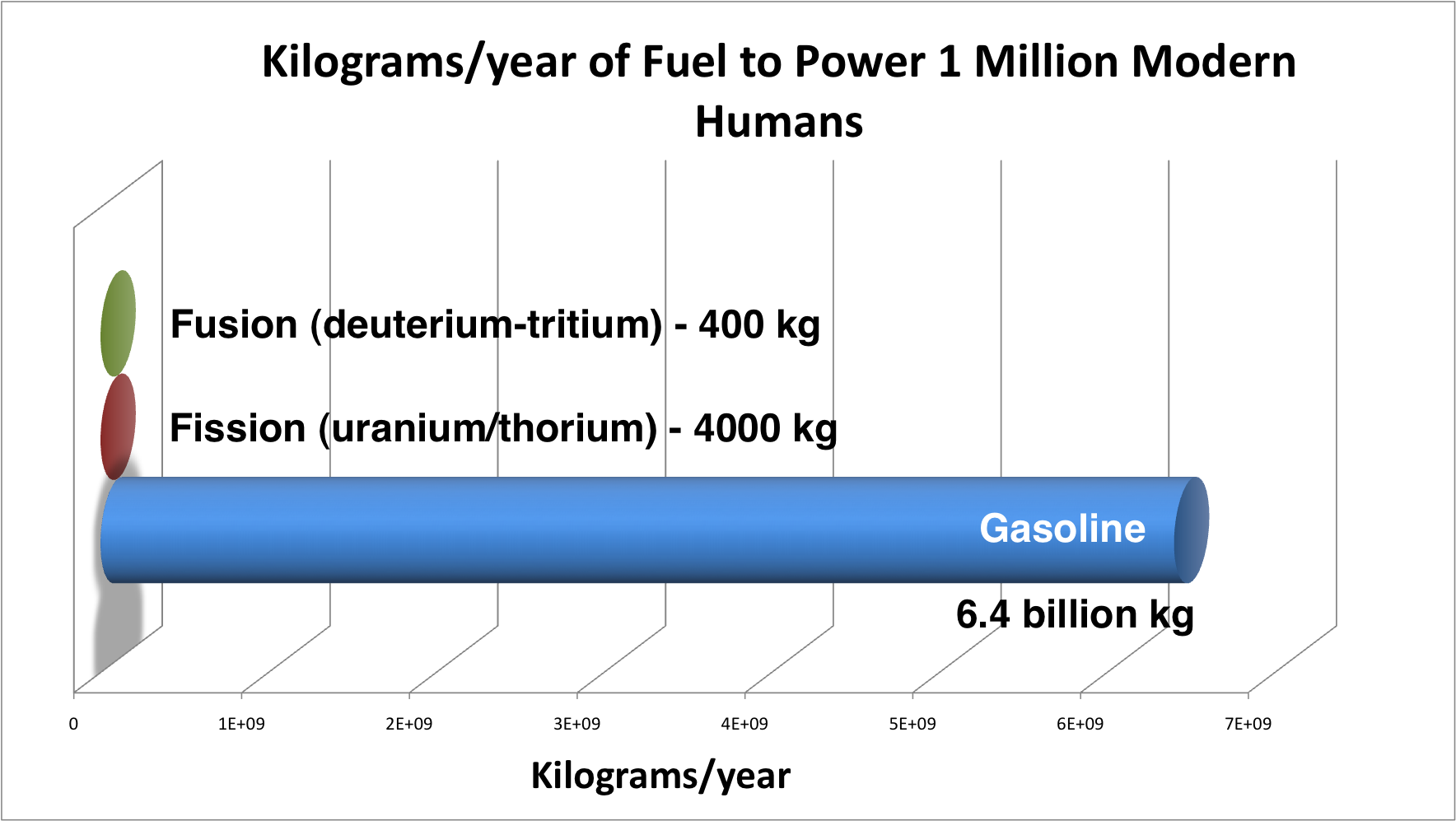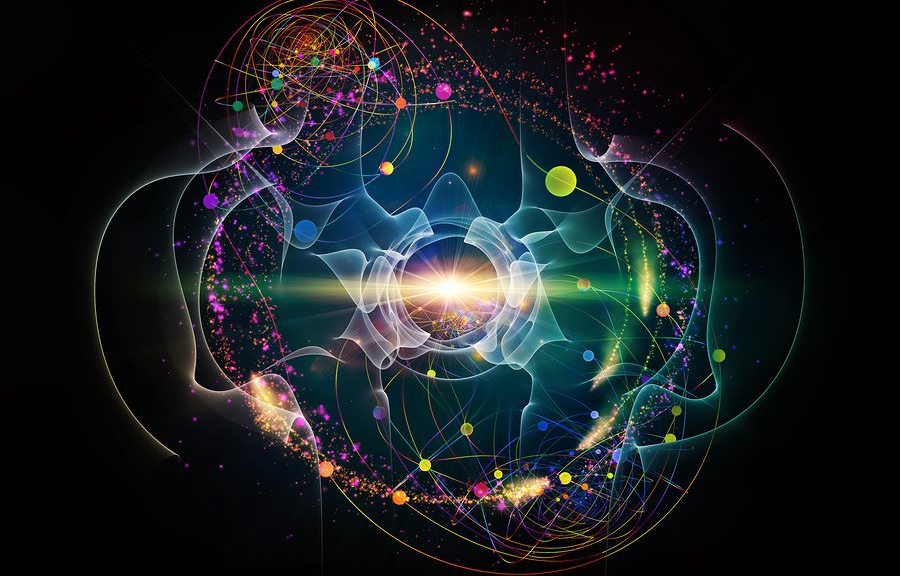The Nuclear Energy Series continues! The last post discussed climate change, and who is to blame for it (hint: us). This series has been intended to be an unbiased look at nuclear energy to power our high-energy lifestyles, especially for an eventual transition to a post-carbon society that doesn’t significantly affect the climate. First, I wrote up an introduction to nuclear power, which included a description of the two main reactions (fission and fusion) and the basics of how a nuclear power plant work. After that, I looked at the different fuels for fission power plants that are operational today, and the option of potentially moving to thorium nuclear power. This time, we’ll look at what is considered by many to be the holy grail of nuclear power: fusion!
What is Nuclear Fusion?
To recap from the first post, nuclear fusion differs from nuclear fission by combining atomic nuclei, as opposed to splitting them. This means that a fusion reaction takes small nuclei and creates bigger ones, and in doing so can release a whopping amount of energy. Generally, only the combining of small nuclei results in released energy, and combining large nuclei (iron, atomic number 26, or higher) has an energy cost. Hence, when I talk about fusion in this article, I’m talking about fusing small nuclei to release energy.
Igniting a fusion reaction between two nuclei is extremely challenging. Since all nuclei contain positively charged protons, and like charges repel each other, there are strong forces at play that prevent fusion from occurring, which form the electromagnetic barrier. Once the barrier is overcome, the strong nuclear force takes over and fuses the nuclei together, which releases energy. Since overcoming this barrier requires huge amounts of velocity and momentum, energy must first be invested to create a fusion reaction. In the sun, which is powered by fusion, the strong gravitational forces in the centre are sufficient to fuse nuclei together in a controlled manner. On Earth, we don’t have this particular option so we have to go about it in different ways.

The common reaction that is pursued for fusion energy is deuterium-tritium fusion. Deuterium and tritium are both forms of the element hydrogen (hydrogen refers to one proton in the nucleus). The deuterium nucleus is 1 proton/1 neutron (2 nucleons, “deu” means 2), and the tritium nucleus is 1 proton/2 neutrons (3 nucleons, “tri” means 3). When combined together, the two protons and two of the neutrons fuse together, and the other neutron flies off. The new and larger nucleus is helium (yes, that helium, as in balloons and squeaky voices). Tons of energy is also a product of the fusing nuclei, which is what we’re after. Here’s an animated illustration:

On Earth, similar to the centre of a star, the ignition of fusion is achieved with extremely high pressures and temperatures. Indeed, one of the first uses of human-induced nuclear fusion was to upgrade fission based nuclear weapons. If you’ll recall from my post on fission, neutrons are fired at large nuclei (uranium, plutonium) which causes them to split, releasing energy. And what is one of the products of a fusion reaction? Neutrons. So, with a basic fission bomb, the intense heat and pressure is used to ignite fusion, which releases tons of neutrons to further power the original fission reaction. Thus, a fusion bomb doesn’t use fusion energy directly, but uses it to power and amplify a fission reaction. This results in the extremely powerful nuclear weapons we have today.
As far as using nuclear fusion for energy/electricity production goes, we are definitely having some problems. We can ignite fusion in a variety of ways, but the energy cost of ignition is almost always higher than what we get out of it, so it’s a net loss (although there has been a recent breakthrough achieving a minuscule gain in energy). Either that or the experiment can only run for a matter of seconds before failing. There are hundreds of fusion experiments worldwide trying to solve this problem, in different ways, with no success.
The big experiments include ITER in France, JET in the UK, Lockheed Martin’s Compact Fusion Reactor, and even (my current hometown) Vancouver’s (Burnaby, rather) General Fusion has a respectable fusion program. Here’s a comprehensive list of fusion links from ITER. The details of these experiments are complicated, but if you’re interested I encourage you to check them out.
After decades of trying (with some progress), we still haven’t achieved commercial fusion, but worldwide people are pouring tens of billions of dollars and their entire careers into this. Why? Because controlled, safe, reliable, economical, net-gain nuclear fusion is the holy grail of energy production. Reasons why are outlined below.
Fusion – The Holy Grail of Energy
Controlled, safe, reliable, economical, net-gain fusion would be so, so awesome. Here are the reasons why (not an exhaustive list, but the main reasons):
1. Extremely high energy density
From lowest energy to highest energy density reactions, it goes:

By energy density, I mean the amount of mass or volume involved compared to the amount of energy that comes out. (Technically, specific energy is the mass basis, and energy density is the volume basis, but we’ll keep it general).
First, you’ll see that physical reactions like heating things up, or freezing/melting, are actually quite low in terms of energy density. Chemical reactions, like burning fossil fuels, are much higher. As I mentioned in “Energy is Awesome“, one of the main advantages of fossil fuels are their energy densities. It only takes a few litres of gasoline to get your car a very long distance! That being said, huge amounts of fossil fuels are needed to power the world. Nuclear fission is on a whole different level and requires much less mass to produce that same amount of energy.
Fusion power is even beyond fission. Remember that in nuclear reactions, mass is converted to energy directly as in Einstein’s formula E = MC2. E is energy, M is mass, and C is the speed of light. Since C is large number, C2 is a ridiculously huge number. This means that even small amounts of mass turn into large amounts of energy.
In fission reactions, generally about 0.1% or less of the mass is converted to energy, compared to fusion where about 1% of the mass is converted to energy. So fusion is about 10 times more energy dense than fission. And fission is really good to begin with! To illustrate, below are the estimated masses of different fuels required to power a modern city of 1 million people for one year (these estimates are my own calculations based on numbers obtained from Wikipedia):

In an ideal situation, less than 1000 pounds of material could supply energy to one million modern humans for an entire year. If that’s not energy density, I don’t know what is.
That being said, and I’ll only touch on this, if we could convert 100% of mass to energy via “annihilation” (in graph above), it would only require about 3-4 kgs of material to support those million people. This process powers warp drive in Star Trek and remains science fiction for now.
2. Very little waste, and the waste is safe(r)
This is a huge reason for pursuing fusion energy. If we were to exploit nuclear fusion as a power source, the waste would be minimal compared to the amount of waste gases that are currently emitted from fossil fuels every year.
Currently, we emit about about 30 gigatons of CO2 per year from fossil fuels. If we use my estimate of 400 kg of waste per one million modern people using fusion power, worldwide (7 billion people) we’d be talking about 0.003 gigatons – about ten thousand times less. And compared to fission reactors – About ten times less waste.
And here’s the thing, and where fusion starts to look much better than fission: it’s just helium! Helium is a noble gas, which means it is chemically inert. Fusion would produce relatively small amounts of an inert gas that is also economically valuable. Helium is used in a variety of industrial processes. No more thinking about what to do with all the radioactive nuclear waste from fission. We want the stuff! In the event of an accident, containment wouldn’t be as big a problem either as hydrogen and helium leaking out is no big deal.

One thing about fusion will some thought is radioactive containment vessels from all the neutron bombardment (the reaction containers become radioactive over time). Compared to what we’re currently doing, I think we’re up to the challenge of solving this relatively minor problem.
3. Reliable like a fossil fuel
This applies to both fission and fusion, but fusion is even more efficient and has less waste. Nuclear, in general, is a fuel source we could reliably tap into whenever we wanted to. No waiting around for wind and sunshine or concerning ourselves with storing the energy. We just fire it up when we want it, like starting your gasoline car engine.
Although nuclear is generally thought of as a source of electricity, the heat produced could be used directly in industrial processes or in environmental control. And with electricity, we could govern electrochemical processes to produce combustible liquid fuels for myriad purposes (airplanes, for instance). Now we’re talking some space age stuff.
4. No greenhouse gas emissions
This is another strength that applies to both fission and fusion. No carbon dioxide! No emissions at all really. The impact on the climate would be minimal.
A related advantage – since fusion packs a punch, fusion plants would require relatively little land area to supply energy to a large population. We could still have our wildernesses and our cities and provide minimal disruption to the ecosystem (assuming everything is safely operated, which would be a necessity not unlike every power plant currently in operation).
5. Would last essentially forever
The fuel components – deuterium and tritium – are just isotopes of hydrogen, the most abundant element in the universe (literally). Deuterium is naturally occurring on Earth, with about 0.01% of hydrogen on earth being the deuterium isotope. That may not sound like much, but there’s so much hydrogen that it really adds up. The best place to find it? Seawater. Water is H2O, which means there are two hydrogen atoms per water molecule. We have processes to separate out the deuterium (known as heavy hydrogen, which comes from heavy water).
As for tritium? There is a process to produce tritium from the element lithium (atomic number 3), which is incredibly abundant in our oceans. This has lead experts to conclude that if controlled fusion energy was realized, it would last for millions of years. Considering homo sapiens have been around about 200,000 years, this is essentially an eternity.
Conclusion
So that’s it – fusion is the holy grail of energy. A lot of the problems that humanity is currently facing with respect to energy and climate change would be solved by an innovation that makes this a reality.
Even though fusion research is expensive, we can’t afford to not pursue this possibility. If, and hopefully when, it is achieved, we can put ourselves into a sustainable future.
